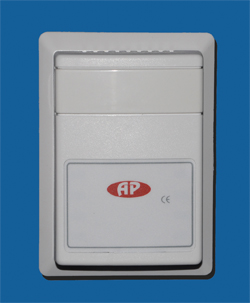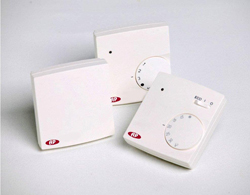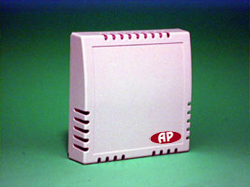|
Sensor against poor indoor air and
unhealthy houses
Install the BIO air quality sensor to improve ventilation
and airing of VOCs/CO2 (volatile
organic substances).
The Kyoto Protocol stresses the importance of
reducing emissions of greenhouse gases CO2 and methane to
bring about better climate control.
The BIO is a simple
VOC/CO2 sensor based on the latest bio-semiconductor technology.
The BIO has been designed to be used
in ventilation systems where there is a need to remove odours in
order to improve air quality.
By means of measurement you can provide fresh
air and optimize ventilation.
|

BIO sensor
|
VOC |
|
|
|
 |
 |
 |
 |
|
Gas specif. |
Manual |
Datasheet |
Tests based on experience |
|
|
The BIO-sensor measures the concentration of different odours and gases such as
tobacco smoke, body odours, smell of frying, carbon monoxide,
methane, ethanol, acetone, methanol, etc.
in different locations.
This multipurpose sensor for indoor use,
offering a solution in a variety of applications
such as restaurants, pubs, kitchens, toilets, recreation rooms,
dressing rooms, smoking rooms and demand controlled ventilation.
The BIO-sensor therefore senses
the gases and odours that humans perceive as unpleasant.
This provides a valuable addition to the
comfort of office buildings in addition to the achieved energy
savings.
|

CBIO - air quality controller with setpoint |
|
The sensor is pre-calibrated for easy
installation.
As a result, the normal installation measures are simplified, and
there is no need for further calibration by a qualified technician.
The BIO-sensor enables more
effective optimization of the ventilation system and can thus reduce
the heating and operating costs.
Features:
-
Gas detection range from 450 to 4000ppm or
450 - 2000 ppm with optional temperature sensing from 0 to
30 °C.
-
0 to 10VDC analogue output, RS 485 (Modbus)
for DDC/PLC or damper actuator.
-
Automatic calibration function with
built-in self-diagnostics.
More about the BIO
sensorīs features and energy saving possibilities |
|
Air Quality Sensors are designed for use
in the building for ventilation purposes.
The sensors are sensitive to a range of odours, smoke, solvent gases
etc., and provide an output proportional to the mixed gas
concentration.
This signal can be used to control fresh air fans and dampers
according to the ventilation load.
In installations where the primary contaminant load is human
respiration, it is recommended that a CO2 sensor is used.
Features
-
Detects particulates as well as gases
-
Duct and space versions
-
Clean, simple installation
-
Long -lasting, accurate sensors
-
Simple BMS-integration
|

SRQ |